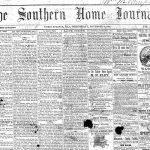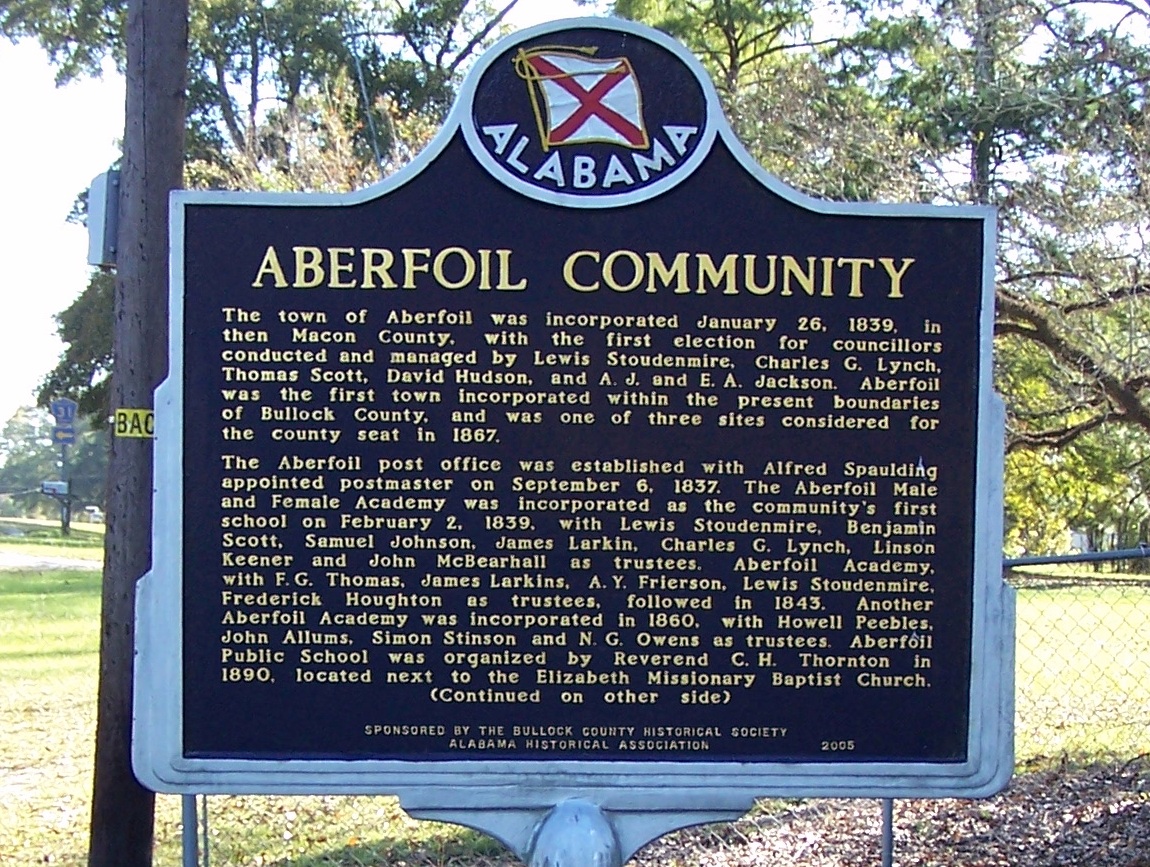Huntsville and Madison County did not rush eagerly into secession in 1861. In fact, the county elected two cooperationist delegates who voted against secession at the January 1861 Alabama Secession Convention. Nevertheless, when war came both the city and county promptly rallied to the defense of their State. Madison County provided 10 infantry companies, 8 cavalry companies, and one artillery battery to the Confederate Army. At least two more infantry companies had been formed in 1861, but were disbanded because Alabama could not accept any more troops at that time. In addition, six Confederate home guard units existed from mid 1861 to early 1862, when the Union Army seized the city. This total of 27 Confederate units is impressive when one remembers that Huntsville and Madison County were occupied by the Union Army for nearly half of the four years of war. The Confederate draft was rarely enforced in Madison County, which means that almost all these men were volunteers. While Madison County provided no units for the invading Union army, a few local residents did enlist in the Northern forces. White Unionists mainly went into the 1st Alabama Cavalry Regiment (US), which was composed largely of men from Winston and Walker Counties. Black Union volunteers and draftees principally were assigned to the 106th U. S. Infantry (Colored), a regiment of only four companies which was organized at Decatur in March l864 to guard the railroad lines. AfricanAmericans from Madison County also served in the Confederate Army, attached to units such as the 4th Alabama Cavalry Regiment and the 4th Alabama Infantry.
Confederate Army units from Madison County:
1. The Madison Rifles, Company D, 7th Alabama Infantry Regiment.
A prewar militia unit, the Madison Rifles were the first troops from Huntsville to leave for the war, departing on March 26, 1861. The company served at Mobile and Pensacola, and later was sent to East Tennessee, Western Kentucky, and finally Mississippi. The Madison Rifles ended their service when the 7th Regiment disbanded at Corinth after its one year’s enlistment, shortly before the Battle of Shiloh. Most of the men then joined other units. John Gordon Coltart was the original captain. He was replaced by Oliver B. Gaston when the regiment was formed and Coltart elected lieutenant colonel. When the colonel, Sterling M. Wood of Florence, was promoted to brigadier general, Coltart succeeded to the command.
2. “The Huntsville Guards,” Company F, 4th Alabama Infantry Regiment.
The second company to volunteer from Huntsville, the men elected as their captain Egbert J. Jones, who had commanded Company E of the 13th U. S. Infantry Regiment during the Mexican war. The Huntsville Guards were mustered in at Dalton, Ga. as Company F of the 4th Alabama Infantry. They served in the Army of Northern Virginia until the surrender at Appomatox. Egbert Jones was elected colonel when the regiment was formed. He was succeeded by Gustavus B. Mastin. Colonel Jones was mortally wounded at the Battle of Manassas in July 1861. Captain Mastin was killed the following year at the Battle of Seven Pines.
3. “The North Alabamians,” Company I, 4th Alabama Infantry Regiment.
Formed immediately after the Huntsville Guards, the North Alabamians left Huntsville with them to join the 4th Alabarna Infantry. Edward Dorr Tracy, later a Confederate general, was the first captain. Like the Huntsville Guards, the North Alabamians served in Virginia from the first battle until the last, surrendering with Robert E. Lee at Appomattox.
4. “The Kelly Rangers/Kelly Troopers,” Company F, Forrest’s Battalion (3d Tennessee Cavalry) and Company K, 4th Alabama Cavalry Regiment.
Led by Rev. David C. Kelly (or Kelley), a former Methodist missionary in China, the Kelly Rangers left for the war in the summer of 1861. The first cavalry company from Madison County, it was made up of men from the New Market and Maysville area. The company traveled by rail to join Lt. Col. Nathan Bedford Forrest’s Battalion at Memphis. Kelly was soon promoted to major, and Joseph B. Hambrick took over as captain. In late 1862, the company was transferred to Colonel A. A. Russell’s 4th Alabama Cavalry, serving with that regiment for the remainder of the war. When Hambrick became lieutenant colonel of the 4th Cavalry, W. R. Whitman took over as captain. The company surrendered with Forrest at Gainesville, Alabama in May 1865.
5. “The North Alabama Cavaliers,” Company I, Forrest’s Battalion and Company I, 12th Alabama Cavalry.
Formed in the New Market area in December 1861, this company was first attached to Forrest’s Battalion. It was this company’s arrival in Hopkinsville, Ky. in January 1862 that apparently caused the famous “yallerhammer” incident, usually erroneously attributed to the Kelly Rangers. Most of the company was captured at Fort Donelson on February 16, 1862. After being exchanged in the fall of 1862, the company was assigned to conscript duty around Huntsville. In 1863 it was incorporated into the 12th Alabama Cavalry Regiment, serving under General Joseph Wheeler. The company saw hard fighting all through the Atlanta campaign, and disbanded the night before the surrender in North Carolina in April 1865. Dewitt C. Davis was the first captain. Charles 0. Shepherd succeeded him.
6. “The New Market Rebels,” Company F, 27th Alabama Infantry Regiment.
This infantry company was mustered into the army on December 24, 1862 at New Market. Dr. Martin P. Roberts was the original captain, replaced by John B. Crow after Roberts’ resignation. The men saw their first combat at Fort Donelson in February 1862, where most of the company was captured when the fort surrendered. Those men not captured fought at Perryville with the 33d Mississippi Infantry Regiment. Exchanged in September 1862, the reorganized 27th Alabama fought next at Baker’s Creek (Champion’s Hill), Mississippi. The New Market Rebels saw considerable action during the Atlanta campaign and were in the Battles of Franklin and Nashville. Only a handful were left to surrender with Johnston’s Army in North Carolina at the war’s end.
7. Company E, 35th Alabama Infantry Regiment.
Composed of men from both Madison and Limestone Counties, this company was organized by John S. Dickson, a Huntsville merchant. Dickson reportedly strode back and forth on the Huntsville court house square, announcing he wanted brave men willing to fight for the South. He soon had enough for a company. The men were mustered into the army in April 1862, at the Lagrange Academy in Franklin County. The 35th Alabama saw action at Baton Rouge and Baker’s Creek. It also was at Vicksburg, but left the city before the surrender. The 35th Alabama spent the remainder of the war in the Army of Tennessee, serving through the Atlanta camping. Promoted to major, John S. Dickson was killed leading a charge at the Battle of Franklin, where the 35th Alabama lost almost half of its men.
8. Company F, 35th Alabama Infantry Regiment.
This company was recruited in March 1862 northeastern Madison County. It was mustered into the 35th at Lagrange at the same time as Dickson’s company and served with them throughout the war. R. J. Peevey was captain until he resigned in June 1862. A. J. Flanagan succeeded him.
9. “The New Madison Guards,” Company E, 37th Tennessee Infantry Regiment.
Thomas 11. Owen formed this unit in April 1861 of men from the New Hope and Owen’s Crossroads area. Intended for David C. Humphreys’ regiment, the company joined a Tennessee regiment when Alabama could not accept them. According to tradition, the company was at Madison Station when a train arrived carrying the Tennessee troops. Captain Owen asked if they could use another company. Being answered in the affirmative, the Alabamians clambered aboard. John Grayson replaced Owen as captain in May 1862. The company fought in all the battles of the Army of Tennessee.
10. “The Madison County Guards,” Company D, 2d Confederate Infantry Regiment and Company A, 55th Alabama Infantry Regiment.
Raised by Daniel R. Hundley of Mooresville in the fall of 1861, this company became part of the 25th Mississippi Battalion, soon redesignated the 2d Confederate Infantry. It saw its first combat at Shiloh. In May 1862, the 2d Confederate was disbanded and the company was assigned to the 55th Alabama. It fought again at Baton Rouge, Corinth, and Baker’s Creek. Thereafter the regiment was transferred to the Army of Tennessee and served in the Atlanta campaign. The regiment suffered heavy losses at Peach Tree Creek, Franklin, and Nashville. Hundley resigned to accept command of the 32d Alabama Regiment, and F. M. Taylor succeeded him as captain.
11. Company H, 49th Alabama Infantry Regiment.
Formed during the winter of 186162, this Madison County company was mustered into the 49th Alabama on January S, 1862. The company left Huntsville shortly before the Union Army occupied the city. The 49th Alabama fought at Shiloh, Baton Rouge, Corinth, and throughout the siege of Port Hudson. The regiment was captured at the surrender of Port Hudson in July 1863. Exchanged three months later, the men fought valiantly to the end of the war as part of the Army of Tennessee. The fate of the company’s commanders suggests the nature of their service. Isaac D. Wann, the first captain, resigned and was succeeded by G. W. Ledbetter. Ledbetter died of disease. John D. Rivers followed him and was killed at Port Hudson. Maples then took command and was seriously wounded at the Battle of Nashville.
12. “The Joe Bradley Rebels,” Company K, 49th A1abama Infantry Regiment.
This company was formed at the same time as Company H and was named for prominent Huntsville resident Joseph Bradley, who donated $500 to equip the men. John R. Gardiner, the first captain, was killed at Shiloh. Leroy Peevey succeeded him. When Peevey resigned, Thomas Jones Taylor later a judge and wellknown early historian of Madison County became captain. Both Company H and Company K suffered heavy losses at Port Hudson.
13. Ward’s Battery.
John James Ward, a former mayor of Huntsville, began raising the only artillery battery from this area in the spring of 1862. However, the Union Army occupation from April to September 1862 halted Ward’s recruiting. The battery was completed shortly after the Union retreat. The men came from both Huntsville and Athens. Ward’s Battery was first sent to the defenses of Mobile. In mid1864, the fourgun battery was ordered to the Army of Tennessee and was active in the Atlanta campaign. Captain Ward was mortally wounded by a shell in July 1864, and Samuel R. Cruse thereafter commanded the battery. The battery apparently did not take part in the Nashville campaign. Most of the battery was overrun and captured at the Battle of Selma on April 2, 1865. A few of the men escaped to fight again at Columbus, Georgia, in one of the war’s last encounters.
14. Company C, 4th Alabama Cavalry Regiment.
Raised during the first Union occupation by Frank B. Gurley in the summer of 1862, this company became part of Russell’s 4th Alabama Cavalry Regiment later that year. The men saw considerable action under Forrest and Wheeler in 1863, and fought in the closing day’s combat at Chickamauga. Late in the war, the company apparently was consolidated, since some of the officers and men surrendered with Forrest as part of Company B. Others show up on the muster rolls of Mead’s Battalion.
15. Company F, 4th Alabama Cavalry Regiment.
Oliver B. Gaston, former captain of the Madison Rifles, formed this company at the Big Spring in Huntsville in September 1862, just days after the Union Army retreated from the city. The company became part of Russell’s Regiment in December. Captain Gaston was captured in 1863 while sick on the south side of the Tennessee River. He died a prisoner of war.
16. “Jordan Light Guards,” Company L, 4th Alabama Cavalry Regiment .
This short lived company was formed in late November 1864 by Thomas Jordan of Huntsville. It was composed largely of teenage boys from the city, many of whom had run away from home to enlist. Captain Jordan was captured on December 23, 1864, in a sharp skirmish where Old Madison Pike crosses Indian Creek. Those who escaped capture seem to have been distributed among other companies.
17. Company E, Mead’s Cavalry Battalion and Company C, 25th Alabama Cavalry Battalion.
Milus E. “Bushwhacker” Johnston’s company was mustered in behind the Union lines near New Hope in January 1864. Johnston continued to recruit throughout the remainder of the war. Johnston’s men did all of their fighting as partisan rangers in North Alabama and Tennessee. In late March 1865, the Confederate War Department authorized forming Colonel Mead’s Alabama companies into the 25th Alabama Cavalry Battalion, with Johnston as lieutenant colonel. John Calvin Drake, Jr. succeeded Johnston as captain. The company surrendered at Huntsville on May 15, 1865 at the war’s end.
18. Company F, Mead’s Cavalry Battalion and Company D, 25th Alabama Cavalry Battalion.
By September 1864, “Bushwhacker” Johnston had recruited enough men to form another company. He entrusted the new unit to Captain Robert Welch, formerly a lieutenant in Company E. The men surrendered at Huntsville in May 1865 as Company D of the 25th Cavalry.
19. Company G, Mead’s Cavalry Battalion and Company E, 25th Alabama Cavalry Battalion.
“Bushwhacker” Johnston began forming this company in September 1864. W. M. Campbell was the captain. However, it is not certain that the company ever reached full strength. The men surrendered with Johnston at the war’s end. Posted here with written permission of the Old Huntsville Magazine. No other permissions granted.







Recent Comments